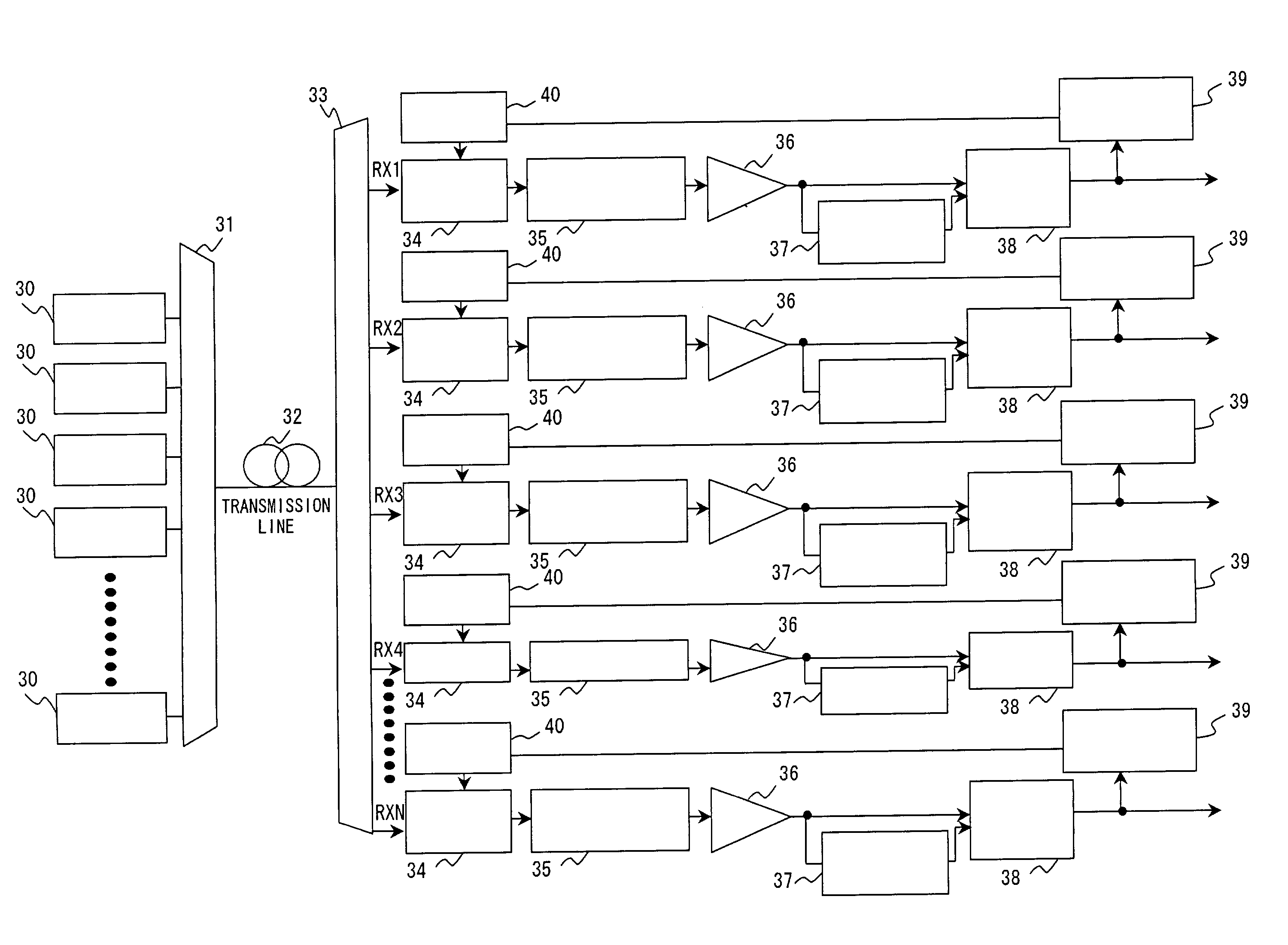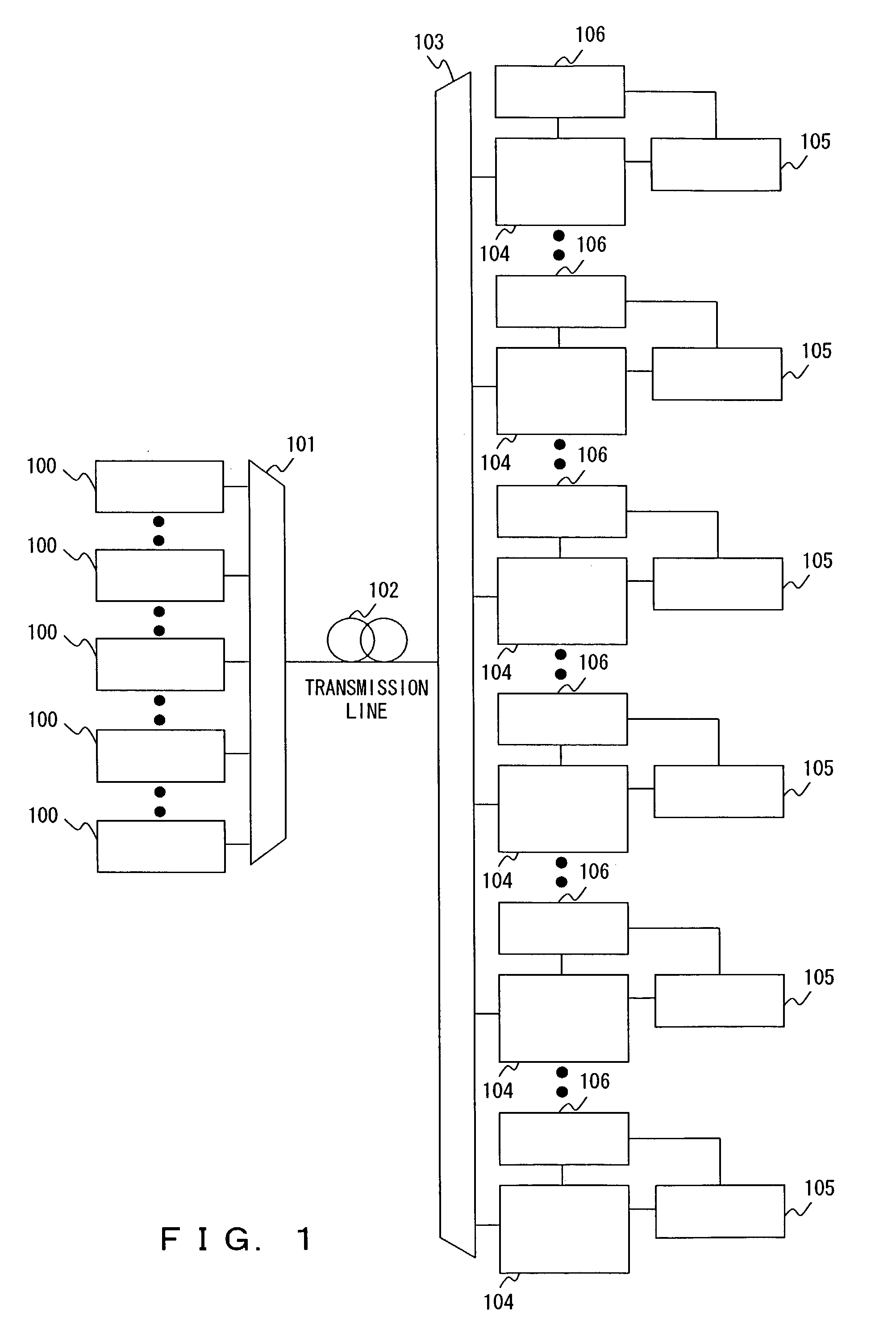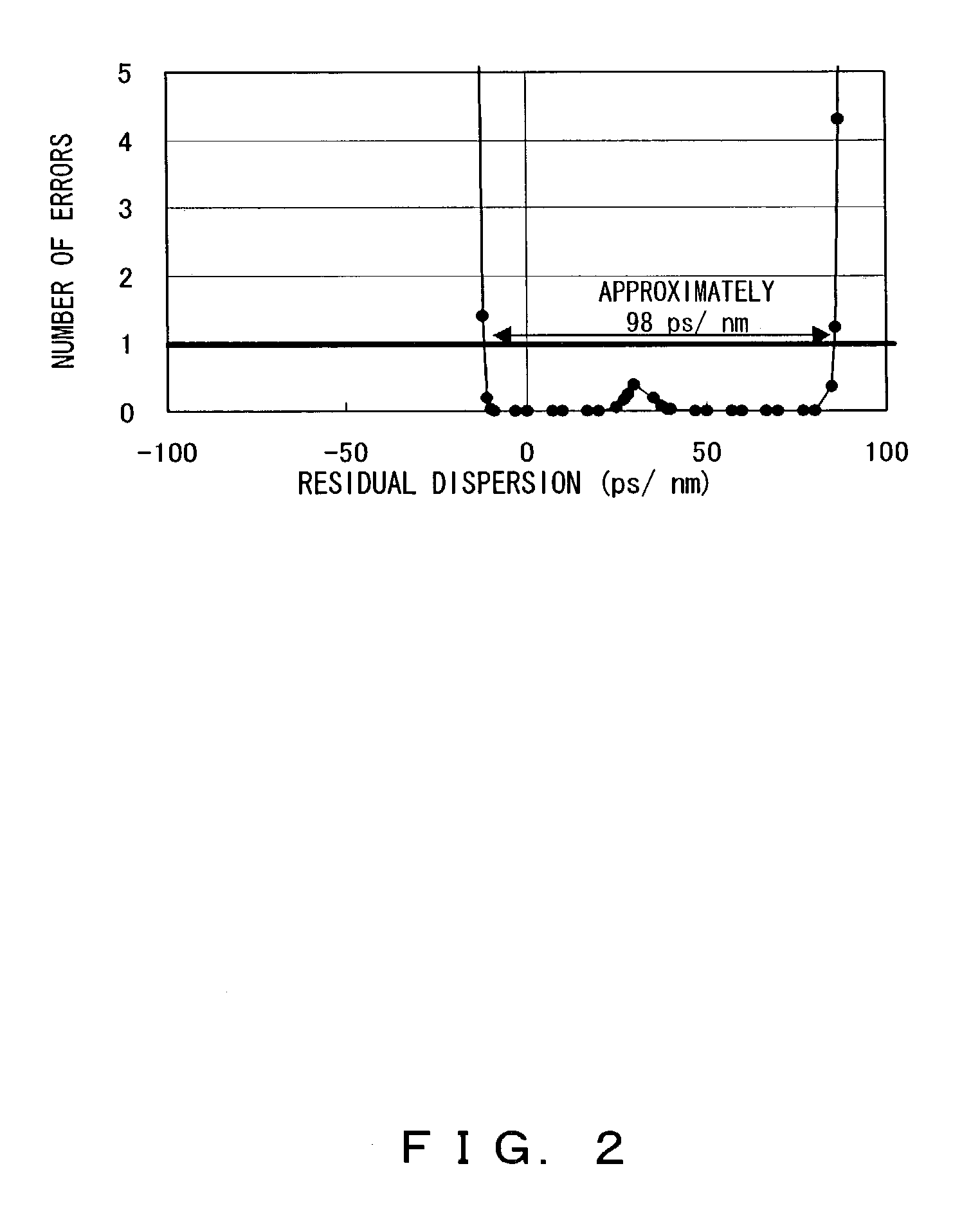Automatic dispersion compensation device and compensation method
a compensation device and automatic technology, applied in the field of optical communication systems, can solve the problems of difficult to realize highly accurate chromatic dispersion compensation, and further limiting the transmission distance of optical signals, so as to improve system performance, influence communication quality, and optimize the control of chromatic dispersion
- Summary
- Abstract
- Description
- Claims
- Application Information
AI Technical Summary
Benefits of technology
Problems solved by technology
Method used
Image
Examples
Embodiment Construction
[0111]The preferred embodiments of the present invention are described below with reference to the drawings.
[0112]In FIG. 4, an automatic dispersion compensation device 1 comprises a transmission quality measurement unit 2 and a chromatic dispersion compensation amount control unit. The transmission quality measurement unit 2 measures the transmission quality of optical signals from one or more channels. The transmission quality measurement unit 2 is a transmission quality monitor measuring, for example, the Q-factor, that is, the error rate of an incoming optical signal, and the like.
[0113]In FIG. 4, an automatic dispersion compensation device 1 comprises a transmission quality measurement unit 2 and a chromatic dispersion compensation amount control unit. The transmission quality measurement unit 2 measures the transmission quality of optical signals from one or more channels. The transmission quality measurement unit 2 is a transmission quality monitor measuring, for example, the...
PUM
 Login to View More
Login to View More Abstract
Description
Claims
Application Information
 Login to View More
Login to View More - R&D
- Intellectual Property
- Life Sciences
- Materials
- Tech Scout
- Unparalleled Data Quality
- Higher Quality Content
- 60% Fewer Hallucinations
Browse by: Latest US Patents, China's latest patents, Technical Efficacy Thesaurus, Application Domain, Technology Topic, Popular Technical Reports.
© 2025 PatSnap. All rights reserved.Legal|Privacy policy|Modern Slavery Act Transparency Statement|Sitemap|About US| Contact US: help@patsnap.com



